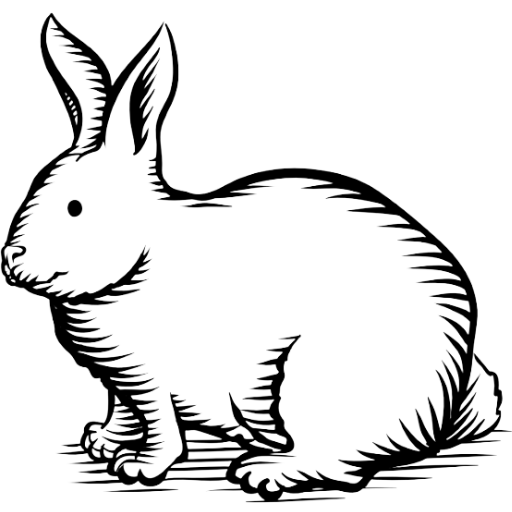A Guide to Choosing your Pet’s Food
“Choosing the highest quality diet within your budget is the best you can do for your pet”
The three types of dog and cat foods that we will review are raw, canned (wet), and kibble (dry). They are in order from most to least recommended based on percentage of moisture, quality of ingredients, and the amount of processing those ingredients go through before arriving in your dog's food bowl.
We believe in adhering to a natural diet which attempts to mimic the diet of dogs' carnivorous ancestors. This biologically appropriate diet can improve the health of your pet, but also leave them feeling more satisfied and energetic after each meal.
This is a basic overview of what factors you should consider when deciding what diet is right for your pet and your budget.
A raw diet has the least amount of processing among commercially available dog foods. Instead of going through a heat treated process, most raw foods are frozen or freeze dried and require no additional preservatives to be kept fresh. Due to this, raw food still contains the necessary enzymes that help your dog digest its food.
“A raw diet has the least amount of processing among commercially available dog foods.”
This bioavailability allows for greater amounts of nutrients to be absorbed into your dog’s system, as well as helping to maintain better dental hygiene by breaking down food that gets stuck in their teeth and gums. These nutrients are not in cooked food due to going through a heated process that breaks, or denatures, the long chains of amino acids that make up the proteins in meat. This process can not only kill beneficial enzymes and bacteria necessary to digesting meat but reduce the amount of natural vitamins and antioxidants found in raw food.
Another important attribute found in raw food is moisture. In nature, a carnivore’s meal contains two-thirds moisture. So in this way raw diets are able to replicate how predators attain moisture through their prey, and may contain blood alongside the meat and organs in order to provide this moisture naturally.
Before the raw food is packaged and shipped, it may go through one of several different processes with which raw diets are made for your pet’s consumption. We will give a small description of each type of process and how it may affect your pet’s food.
“Straight” Raw
This type of raw food does not go through any processes and contains all the natural bacteria and enzymes raw meat has naturally. Some manufacturers will add blood back into the ground meat to ensure all original nutrients included in the meat are transferred to your pet’s food.
One argument in favor of straight raw food is that the bacteria that may be harmful to your pet will be broken down by the acids in a dog’s stomach. Some owners believe that all of the bacteria in raw meat is beneficial for pets, or may feel as though other sterilization processes remove not only harmful but beneficial bacterias as well. Others find that these unsterilized raw foods are more palatable to their dogs, or may find it attractive due to the lower prices when in comparison to HPP brands.
Fermentation
The use of fermentation is unique to Answers Pet Food, which we carry in our store. This process works to remove harmful bacteria while adding beneficial probiotics to the meat that help with digestion. Supplemental products unique to Answers include raw fermented goats milk, fish stock, and kefir, which can be added to either cooked or raw diets to help promote good digestion and health.
These fermented products are similar to how humans may eat yogurt or kombucha for their probiotic benefits. The bacteria included in fermented food will not hurt your pet, but its many claimed benefits are not yet confirmed or denied by the FDA. Fermentation also makes the food more bioavailable so you actually have to feed less than you would with unfermented foods.
Answers Pet Food is the only fermented diet on the market.
HPP
Some raw diets are put through HPP, or high pressure pasteurization. Unlike regular pasteurization, this process does not use heat and instead uses pressure to eliminate all bacteria. However this process also removes some of the beneficial bacterias that many pet owners turn to raw food for in the first place. Eliminating these bacteria can also cause foreign bacteria to grow on the meat. Some believe that this pressure can also alter the makeup of the ingredients. However, many believe this is a safer alternative to traditional raw meat diets. This expensive process does however raise the price of the products and may alter the taste.
Frozen vs Freeze-dried
The main difference between frozen and freeze-dried foods is cost and convenience. Frozen diets are less expensive when compared to freeze-dried, as freeze-drying not only requires more time to produce but requires specialized machinery to complete the process. Despite its higher cost, freeze-dried food is highly convenient as it does not need to be stored frozen and as a result does not need to be thawed hours before feeding. Freeze-dried food does require water to be added to not only make the food as more appealing texture but provide the ever-necessary moisture in your dog’s diet. Many people may use a frozen diet regularly but opt to use freeze-dried foods during travel for its convenience.
Freeze-dried food is meant to be rehydrated.
So Why or Why Not Raw?
Some households with small infants may be hesitant to use a raw diet because of its unpasteurized nature. It is important to remember to follow the rules of handling raw meats when handling your pet’s food, and to thoroughly wash yours hands before and after feedings. Some dogs, especially older ones, may have a compromised immune system that cannot properly digest raw foods.
Please note: It is equally as important to wash your hands after handling any pet food, whether it be raw or cooked!
Your pet may need to to get used to consuming raw or fermented foods, and there is a chance that they may not eat it at all. It is important to start with a small sample of these foods to gauge your pet’s interest. Despite its benefits, your dog may prefer a canned or kibble diet.
We at Brookdale Pet Center promote a raw diet above all else due to its health benefits, which include a healthier skin and coat, smaller and easy to clean up stools, less smelly breath and improved teeth, as well as avoiding future visits to the vet because of any digestion related problems that may be caused by an inappropriate diet. Overall, a raw diet will make a visible difference in your pet’s health and energy.
Canned Wet Foods
Take a minute to write an introduction that is short, sweet, and to the point. If you sell something, use this space to describe it in detail and tell us why we should make a purchase. Tap into your creativity. You’ve got this.






